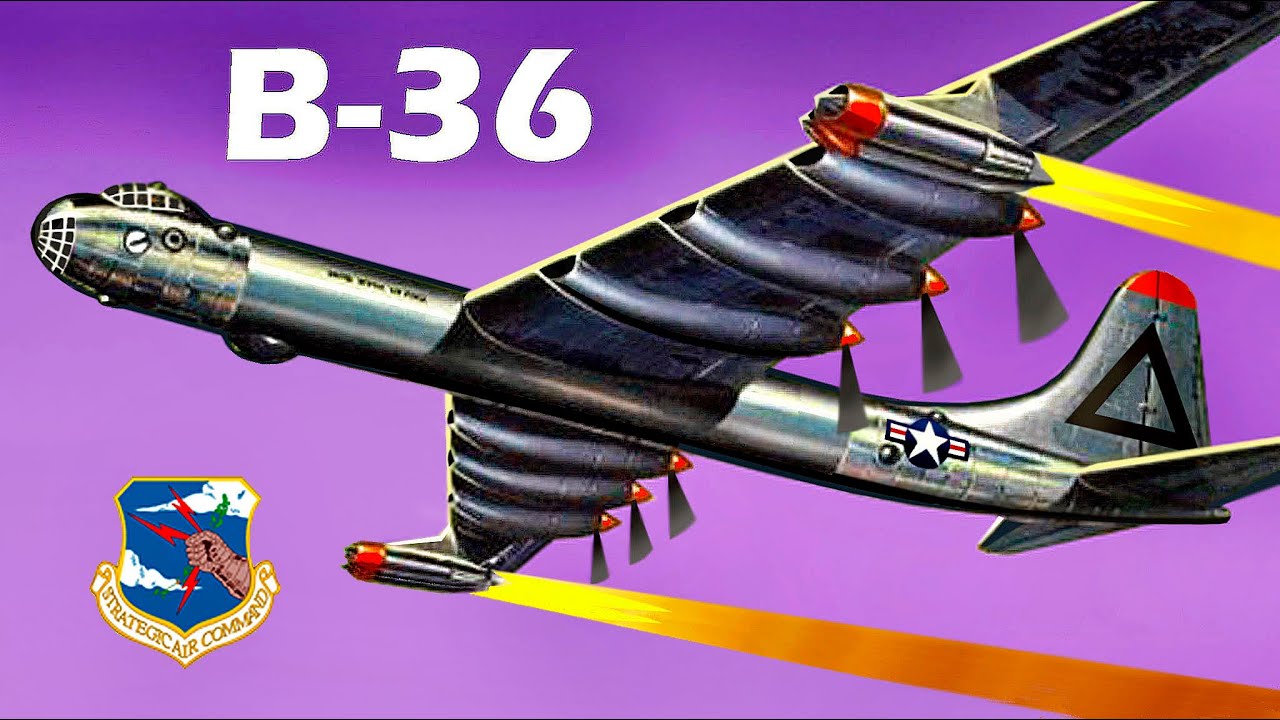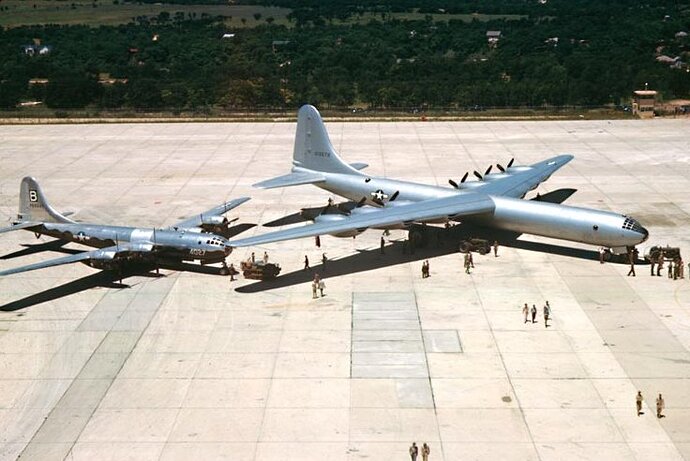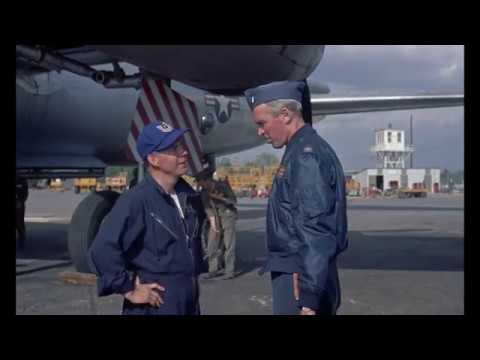In 1941, before the United States entered World War II, military planners were considering a scenario in which Britain might fall to Nazi Germany, depriving the U.S. of an “aircraft carrier” located within bombing range of Germany by its B-17 Flying Fortress heavy bombers. Should hostilities break out between the U.S. and Germany, the only option for aerial bombardment would be direct round-trip bombing missions from North America, which would require a combat range of at least 9200 km from a base in Gander, Newfoundland to Berlin. In August 1941, specifications were refined in a request for proposals for a plane with a maximum range of 16,000 km, 4.5 tonne bomb load, and service ceiling of 12 km, higher than almost any German anti-aircraft fire.
After the entry of the U.S. into the war after Pearl Harbor and increasing confidence Britain would not be invaded, the original rationale for the B-36 evaporated, but in 1943 the project was given priority as it would permit attacking Japan and Japanese forces in Asia without the need for forward bases which required bloody amphibious assaults to take. Development of the giant plane ran into numerous problems and delays, and the first plane did not fly until 1946-08-08, almost a year after the defeat of Japan.
With the emergence of the Cold War, the B-36 became the front-line strategic bomber in the inventory of the newly formed (1947) U.S. Air Force, as it was the only aircraft able to deliver the large and heavy nuclear weapons of the era to targets in the Soviet Union from bases in North America. In-flight refueling had not yet been introduced, so only the B-36’s enormous combat range of 6413 km enabled such missions.
While the plane was under development, its builder, Convair, proposed “Peacemaker” as its name. The Air Force never officially adopted any name for the type, but “Peacemaker” was widely used nonetheless. (Curiously, “Peacemaker” was also proposed as the name for the intercontinental ballistic missile developed in the 1970s and 1980s under the working name “MX”. Shortly before the official introduction of the missile in 1983, it was renamed “LGM-118A Peacekeeper”, presumably because wets in the Reagan administration considered “Peacemaker” too bellicose a moniker for a weapon intended to deter attack from an adversary with 35,130 nuclear weapons in its inventory, many targeted on the United States.)
The B-36 was enormous for its day. The B-29 had been considered a huge airplane, but the B-36 was something else entirely. Here is a B-36 alongside a B-29 at Carswell Air Force Base in 1948.
The B-36 was subsequently upgraded by adding four jet engines outboard on the wings to assist in takeoff and (kind of) high-speed dashes to the target and out of enemy territory. This gave it ten engines—six piston and four turbojet—leading to status reports of “six turning and four burning”.
The B-36’s service life was to be short, as its slow speed rendered it vulnerable to jet fighters, and the introduction of the B-52 all-jet heavy bomber with refueling capability made it obsolete. The last B-36 was retired from service in February 1959.
Regrettably, Dennis R. Jenkins’s two superb books about the B-36, Magnesium Overcast and B-36 Photo Scrapbook, are both out of print. Used copies can sometimes be found at affordable prices with, oddly, hardcovers of the first title sometimes less expensive than paperbacks.



